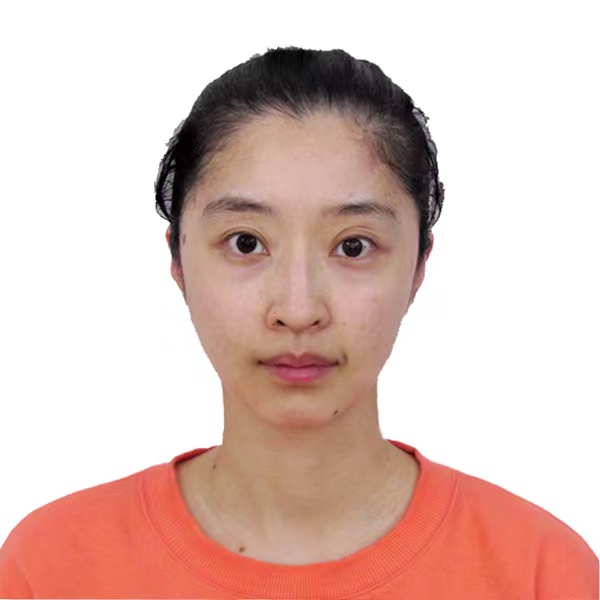Team 1 Project: Predicting Ice-bed Topography using Predictive Modeling
Team members:
 REU Student: Katherine Yi, Department of Computer Science, Purdue University, West Lafayette, IN
REU Student: Katherine Yi, Department of Computer Science, Purdue University, West Lafayette, IN REU Student: Angelina Dewar, Department of Physics, University of Oregon, Eugene, OR
REU Student: Angelina Dewar, Department of Physics, University of Oregon, Eugene, OR REU Student: Tartela Tabassum, Department of Information Systems, University of Maryland, Baltimore County, Baltimore, MD
REU Student: Tartela Tabassum, Department of Information Systems, University of Maryland, Baltimore County, Baltimore, MD REU Student: Jason Lu, College of Information Studies, University of Maryland, College Park, MD
REU Student: Jason Lu, College of Information Studies, University of Maryland, College Park, MD REU Student: Ray Chen, Marriotts Ridge High School, Ellicott City, MD
REU Student: Ray Chen, Marriotts Ridge High School, Ellicott City, MD RA Student: Homayra Alam, PhD student, Department of Information Systems, UMBC
RA Student: Homayra Alam, PhD student, Department of Information Systems, UMBC Collaborator: Omar Faruque, PhD student, Department of Information Systems, UMBC
Collaborator: Omar Faruque, PhD student, Department of Information Systems, UMBC Collaborator: Sikan Li, Texas Advanced Computing Center, University of Texas at Austin
Collaborator: Sikan Li, Texas Advanced Computing Center, University of Texas at Austin Collaborator: Dr. Mathieu Morlighem, Professor, Department of Earth Sciences, Dartmouth College
Collaborator: Dr. Mathieu Morlighem, Professor, Department of Earth Sciences, Dartmouth College Research Mentor: Dr. Jianwu Wang, Associate Professor, Department of Information Systems, UMBC
Research Mentor: Dr. Jianwu Wang, Associate Professor, Department of Information Systems, UMBC
Abstract: The purpose of this research is to study how different machine learning and statistical models can be used to predict bed topography in Greenland using ice-penetrating radar and satellite imagery data. Accurate bed topography representations are crucial for understanding ice sheet stability, melt, and vulnerability to climate change. We explored nine predictive models including dense neural network, LSTM, variational auto-encoder (VAE), extreme gradient boosting (XGBoost), gaussian process regression, and kriging based residual learning. Model performance was evaluated with mean absolute error (MAE), root mean squared error (RMSE), coefficient of determination (R2), and terrain ruggedness index (TRI). In addition to testing various predictive models, different interpolation methods, including Nearest Neighbor interpolation, Bilinear Interpolation, and Universal Kriging were used to obtain estimates the values of ice surface features at the ice bed observation locations. The XGBoost model with Universal Kriging interpolation exhibited strong predictive capabilities but demands extensive resources. Alternatively, the XGBoost model with bilinear interpolation showed robust predictive capabilities and required fewer resources. These models effectively captured the complexity of the Greenland ice sheet terrain with precision and efficiency, making them valuable tools for representing spatial patterns in diverse landscapes.
Deliverables:
- Implementation Source Code at Github Repository
- Presentation Slides
- Presentation Recording
- Technical Report
- Peer reviewed publication: Katherine Yi, Angelina Dewar, Tartela Tabassum, Zhengze Lu, Ray Chen, Homayra Alam, Omar Faruque, Sikan Li, Mathieu Morlighem, Jianwu Wang. Evaluating Machine Learning and Statistical Models for Greenland Bed Topography. Accepted by the 22nd IEEE International Conference on Machine Learning and Applications (ICMLA) 2023.
Team 2 Project: Enhancing Real-Time Imaging for Radiotherapy: Leveraging Hyperparameter Tuning with PyTorch
Team members:
 REU Student: Kaelen Baird, Departments of Computer Science and of Mathematics, Skidmore College, Saratoga Springs, NY
REU Student: Kaelen Baird, Departments of Computer Science and of Mathematics, Skidmore College, Saratoga Springs, NY REU Student: Sam Kadel, Departments of Computer Science and of Psychology, Mount Holyoke College, South Hadley, MA
REU Student: Sam Kadel, Departments of Computer Science and of Psychology, Mount Holyoke College, South Hadley, MA REU Student: Brandt Kaufmann, Department of Mathematics and Statistics, University of San Francisco San Francisco, CA
REU Student: Brandt Kaufmann, Department of Mathematics and Statistics, University of San Francisco San Francisco, CA REU Student: Ruth Obe, Department of Computer Science, University of Houston-Clear Lake, Houston, TX
REU Student: Ruth Obe, Department of Computer Science, University of Houston-Clear Lake, Houston, TX REU Student: Yasmin Soltani, Department of Biomedical Engineering, University of Houston, Houston, TX
REU Student: Yasmin Soltani, Department of Biomedical Engineering, University of Houston, Houston, TX RA Student: Mostafa Cham, PhD student, Department of Information Systems, UMBC
RA Student: Mostafa Cham, PhD student, Department of Information Systems, UMBC Collaborator: Zhuoran Jiang, Medical Physics Graduate Program, Duke University
Collaborator: Zhuoran Jiang, Medical Physics Graduate Program, Duke University Collaborator: Dr. Vijay R. Sharma, Department of Radiation Oncology, University of Maryland School of Medicine
Collaborator: Dr. Vijay R. Sharma, Department of Radiation Oncology, University of Maryland School of Medicine Collaborator: Dr. Lei Ren, Associate Professor, Department of Radiation Oncology, University of Maryland School of Medicine
Collaborator: Dr. Lei Ren, Associate Professor, Department of Radiation Oncology, University of Maryland School of Medicine Collaborator: Dr. Stephen W. Peterson, Department of Physics, University of Cape Town, South Africa
Collaborator: Dr. Stephen W. Peterson, Department of Physics, University of Cape Town, South Africa Collaborator: Dr. Jerimy C. Polf, H3D, Inc.
Collaborator: Dr. Jerimy C. Polf, H3D, Inc. Collaborator: Dr. Carlos A. Barajas, Department of Mathematics and Statistics, UMBC
Collaborator: Dr. Carlos A. Barajas, Department of Mathematics and Statistics, UMBC Research Mentor: Dr. Matthias K. Gobbert, Professor of Mathematics, Department of Mathematics and Statistics, UMBC
Research Mentor: Dr. Matthias K. Gobbert, Professor of Mathematics, Department of Mathematics and Statistics, UMBC
Abstract: Proton beam therapy is an advanced form of cancer radiotherapy that uses high-energy pro-ton beams to deliver precise and targeted radiation to tumors, mitigating unnecessary radiation exposure to surrounding healthy tissues. Utilizing real-time imaging of prompt gamma rays can enhance the effectiveness of this therapy. Compton cameras are proposed for this purpose, capturing prompt gamma rays emitted by proton beams as they traverse a patient’s body. However, the Compton camera’s non-zero time resolution results in simultaneous recording of interactions, causing reconstructed images to be noisy and lacking the necessary level of detail to effectively assess proton delivery for the patient. In an effort to address the challenges posed by the Compton camera’s resolution and its impact on image quality, machine learning techniques, such as recurrent neural networks, are employed to classify and refine the generated data. These advanced algorithms can effectively distinguish various interaction types and enhance the captured information, leading to more precise evaluations of proton delivery during the patient’s treatment. To achieve the objectives of enhancing data captured by the Compton camera, a PyTorch model was specifically designed. This decision was driven by PyTorch’s flexibility, powerful capabilities in handling sequential data, and enhanced GPU usage, accelerating the model’s computations and further optimizing the processing of large-scale data. The model successfully demonstrated faster training performance compared to previous approaches and achieves an overall fair accuracy with so far limited hyperparameter tuning, highlighting its effectiveness in advancing real-time imaging of prompt gamma rays for enhanced evaluation of proton delivery in cancer therapy.
Deliverables:
- Implementation Source Code at Github Repository
- Presentation Slides
- Presentation Recording
- Technical Report
- Peer reviewed publication: Ruth Obe, Brandt Kaufmann, Yasmin Soltani, Sam Kadel, Kaelen Baird, Mostafa Cham, Matthias K. Gobbert, Carlos A. Barajas, Zhuoran Jiang, Vijay R. Sharma, Lei Ren, Stephen W. Peterson, Jerimy C. Polf. Accelerating Real-Time Imaging for Radiotherapy: Leveraging Multi-GPU Training with PyTorch. Accepted by the 2023 National Symposium for NSF REU Research in Data Science, Systems, and Security (REU 2023 Symposium), Special Session at the 22nd IEEE International Conference on Machine Learning and Applications (ICMLA) 2023, IEEE.